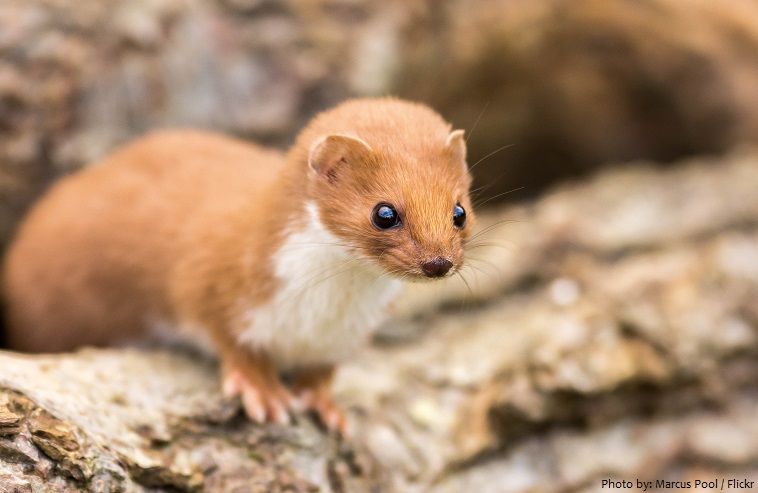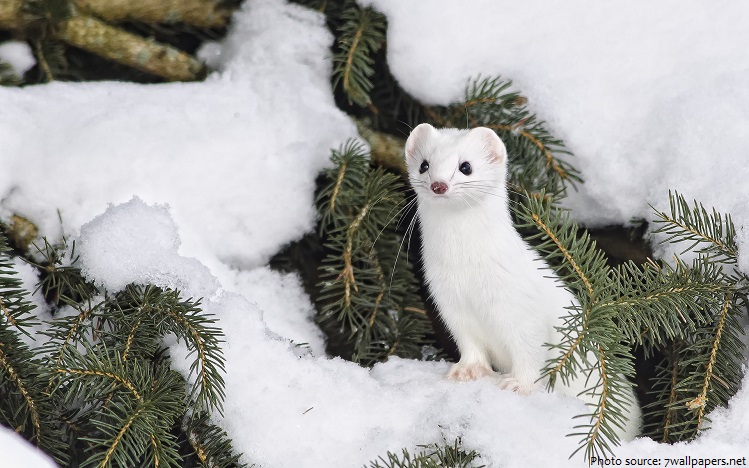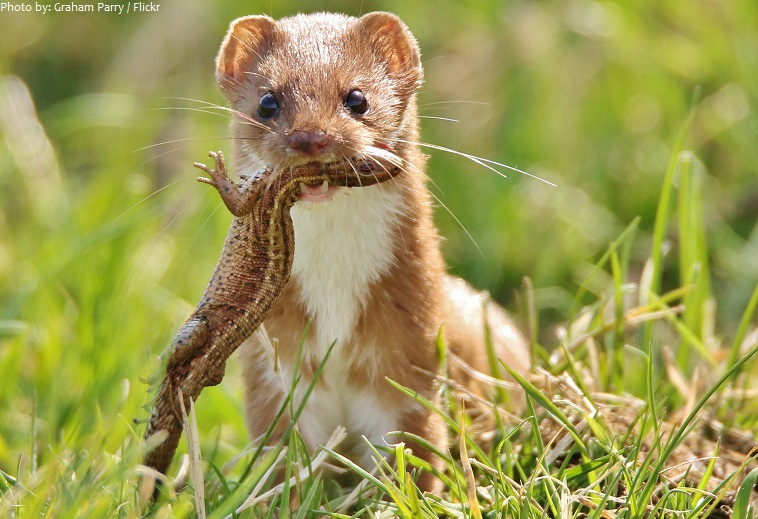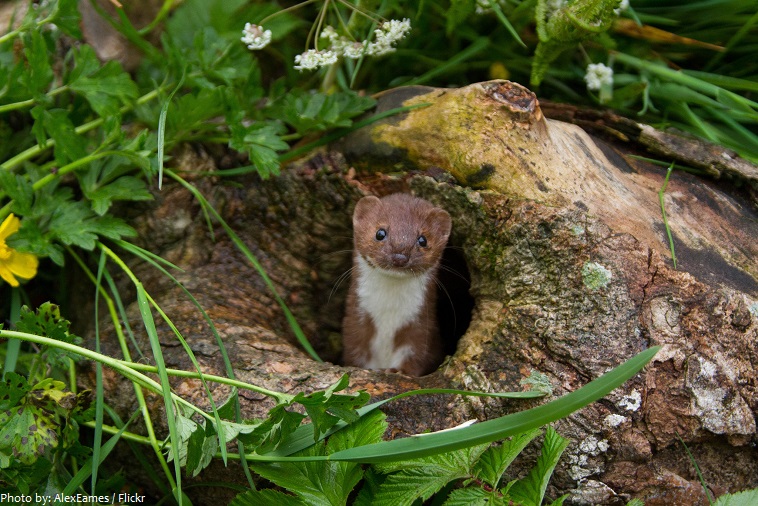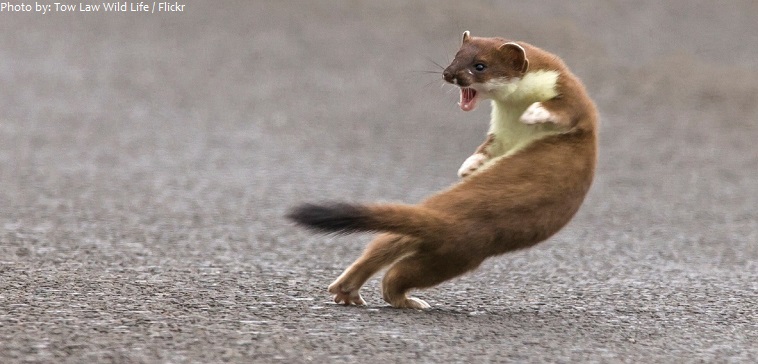Weasels are small, nimble mammals of the genus Mustela of the family Mustelidae.
There are 10 species of weasel.
They can be found all across the world except for Antarctica, Australia, and neighbouring islands.
Found in a range of habitats, the weasel favours good cover and plentiful prey, including woodland, grassland, sand dunes, mountains, urban areas, marshes and moors.
Weasels have a lifespan of up to 2 – 3 years in the wild, up to 10 years in captivity.
Weasels have long, slim bodies. Their short legs have five small-clawed toes on each foot. Their necks are long, their heads small and triangular; eyes are small in relation to head size, and the ears, set low on the skull, are rounded and well-furred.
Weasels vary in length from 17 to 22 centimeters (6.8 to 8.5 in), females being smaller than the males. Their tails may be from 3.5 to 5.2 centimeters (1.3 to 2.0 in) long; The average weasel weighs about 200 grams (7 ounces).
Weasels have brown to yellow-brown fur with paler fur on the belly. The tip of the tail is often black. Many weasels grow white fur in the winter, but the tip of the tail remains black.
Weasels are active in both winter and summer; they do not hibernate.
Depending on the climate and season, they may display nocturnal or diurnal behavior.
Aside from when they are mating or weaning young, weasels are solitary animals that fend for themselves in the wild.
They are known to be territorial, defending their home ranges when invaded. Home range sizes vary with habitat, population density, season, sex, food availability, and species.
They’re skilled climbers, swimmers and runners.
Weasels are ferocious predators. Their senses of sight, smell and hearing are acute, their hunting instinct is keen, and they are active, aggressive and quick.
Weasels are carnivores who eat over 40% of their own body weight each day. They eat small mammals (like mice, squirrels, lemmings, rabbits, and hares), birds, frogs, lizards, insects, carrion (dead meat that they find).
Their long slender bodies enable them to follow their prey into burrows.
Weasels often kill more prey than they can eat, storing the overkill for later consumption.
Male weasels mate with multiple females and do not provide parental care. Most species have a single litter per year. Litter size varies from 3 to 8 kittens. The young are born after a gestation period of anywhere from 35 days to more than 10 months, the latter because of delayed implantation of the fertilized egg.
Young Weasels develop remarkably quickly and are not only weaned by the time they are two months old, but are also able to hunt small prey and will leave their mother within the next few weeks to establish a territory of their own.
Despite their fast and dexterous nature, the small size of Weasels means that they are preyed upon by a number of different predators throughout their natural range. Birds of Prey such as owls, hawks and eagles that are able to spot them from high in the sky are the most common predators of the weasel, along with foxes and snakes.
A group of weasels can be called a boogle, gang, pack, and confusion.
The least weasel is the world’s smallest mammalian carnivore.
Weasels often prey on animals larger than themselves.
Much like their skunk relatives, weasels release foul-smelling substance from their anal glands as a defense mechanism, and perhaps even to mark their territory.
Weasels, stoats, and even domesticated ferrets all perform a hilarious “weasel war dance” when they’ve got their prey cornered. Scientists aren’t totally sure why they do this. One theory is that the weasel’s wacky twisting, hopping, and darting around distracts, confuses, or even hypnotizes prey animals.
The English word “weasel” was originally applied to one species of the genus, the European form of the least weasel. This usage is retained in British English, where the name is also extended to cover several other small species of the genus.
Weasels have been assigned a variety of cultural meanings.
In Greek culture, a weasel near one’s house is a sign of bad luck, even evil, “especially if there is in the
household a girl about to be married”, since the animal (based on its Greek etymology) was thought to be an unhappy bride who was transformed into a weasel and consequently delights in destroying wedding dresses. In neighboring Macedonia, however, weasels are generally seen as an omen of good fortune.
In Japan, weasels were seen as yōkai(ghost, phantom), from time immemorial, and they cause various strange occurrences.
In the Native American tradition, the weasel has the medicine for seeking out secrets. Trust your own senses in regard to other people, and you will come out all right, even if it means going alone. This is part of what weasel teaches.
